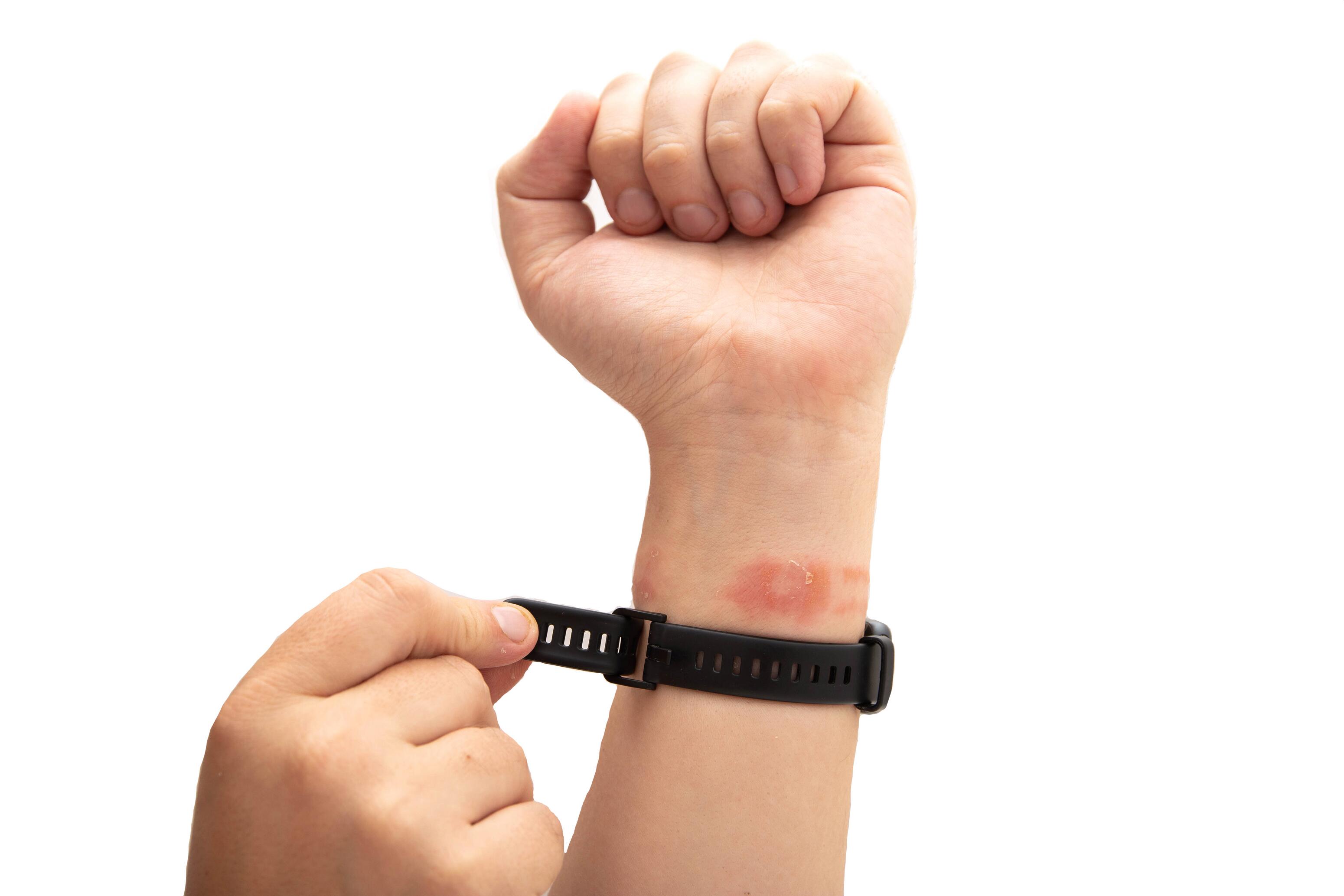- Your skin
-
Our products
Do you know well atopic dermatitis ?
DEXERYL supports you and take care of your dry skin each day
-
CLINICAL RESULTS
- About dexeryl
Uncover the signs and treatments for allergic or irritative contact dermatitis. Expert advice to soothe your skin.

Summary
Contact dermatitis, or contact eczema, manifests in two forms:
- Allergic contact dermatitis occurs when an individual develops a sensitivity to an allergen after repeated exposure.
- Irritative contact dermatitis results from direct exposure to an irritating substance that damages the skin, leading to inflammation.
Among the allergens involved, we find.

Nickel (found in costume jewellery, zippers, buttons), dyes and tints (textiles), leather, and adhesives (shoes) are common allergens.
Dyes, hairsprays, nail varnishes, deodorants, lotions, and make-up often contain preservatives, dyes, and fragrances that can cause allergies.


Topical creams and gels (antibiotics, anti-inflammatories), antiseptics, and dressings can be allergenic.
Latex, epoxy resins, or chemical substances are found in specific professional environments: healthcare, hairdressing, cosmetics, construction, cleaning, agriculture, etc.

These substances can trigger an allergic reaction when exposed to UV rays (sunscreens, perfumes, medications) upon contact with the skin.
Irritants can be physical (repeated friction, abrasions, occlusion) or chemical (detergents, acids).
Factors determining the severity of irritative contact dermatitis symptoms include:
- The amount and concentration of the irritant.
- The duration and frequency of exposure.
- The type of skin (dry, thin, oily, etc.)
- Previous skin conditions (pre-existing atopic dermatitis, injuries, and wounds).
- The environment (extreme temperatures, humidity) can exacerbate symptoms.
In the acute phase, contact dermatitis is characterized by skin redness and dry patches that cause intense itching (pruritus). On these patches, vesicles filled with clear fluid burst and ooze, especially after scratching. These lesions appear in the direct contact area with the allergen but can sometimes spread. Sensitive areas such as the eyelids, face, or genital organs may also exhibit edema (swelling).
The subacute phase is marked by crust formation, scaling, and skin hyperpigmentation. The chronic phase is marked by lichenification: the skin thickens and becomes rough. These symptoms often affect the hands, which are the main location for contact dermatitis.
Examining the lesions is not enough to distinguish allergy from irritation, but their symptoms can differ:
- Allergy generally manifests with significant itching. The symptoms of irritative contact dermatitis are mainly sensations of burning, tingling, and pain.
- In case of irritation, symptoms appear quickly. In allergic contact dermatitis, lesions develop 1 to 3 days after exposure to the allergen, in case of repeated exposure.
- Allergic contact dermatitis heals slower than the irritative form.
To diagnose contact dermatitis, doctors will inquire about the patient's symptom history: onset, location, and possible triggering factors. They will also examine the skin thoroughly. Specific questions about the work environment, hobbies, skincare products, and lifestyle habits will help identify potential allergens or irritants.
Patch tests are used to confirm the diagnosis by identifying the responsible allergens. The doctor applies small amounts of potential allergens on the skin, usually on the back. They then examine the skin's allergic reaction to these substances after 48 hours to detect delayed allergic reactions.
Distinguishing contact dermatitis from atopic dermatitis can be tricky, as their symptoms overlap. Certain features help differentiate them.
Contact dermatitis is usually caused by exposure to a specific substance and is limited to the contact area (hands, face, neck). It primarily affects adults.
Atopic dermatitis is a chronic disease that alternates between flare-ups and remissions. It typically affects infants and is often associated with other atopic diseases like asthma and allergic rhinitis. The lesions are generally located on the folds (elbows, knees), cheeks, and neck.
Allergy tests can identify the allergens of contact dermatitis.
The diagnosis of atopic dermatitis is usually clinical (family history of atopy and associated atopic diseases). Sometimes, allergological tests like specific IgE blood levels are necessary.
The first step in treating contact dermatitis is avoiding the responsible substances, which may involve various adaptations (skincare products, professional practices, hobbies, and home environment).
Topical treatments for dermatitis rely on corticosteroids, to reduce inflammation and itching. Follow the doctor's prescription carefully by applying the ointment or topical cream once a day, only on the lesions, until they disappear entirely, is crucial.
In severe cases, doctors may prescribe oral corticosteroids or retinoids. Antihistamines can also help relieve intense itching.
Recognizing specific allergens and irritants is fundamental. Preventing contact dermatitis requires skincare changes, such as using hypoallergenic products.
Protecting the skin is a fundamental step in preventing contact dermatitis:
- Limit skin contact with moisture.
- After contact with allergens or irritants, wash hands with lukewarm water and soap-free cleansers, rinse, and dry thoroughly.
- Regularly use emollients for good skin hydration and to strengthen the skin barrier.
- Choose hypoallergenic and fragrance-free products.
- If avoidance is impossible, use protective gloves.
References
1. Litchman G, Nair PA, Atwater AR, et al. Contact Dermatitis. National Library of Medicine. Treasure Island (FL): StatPearls Publishing; 2023 Jan. [Disponible sur :]
https://www.ncbi.nlm.nih.gov/books/NBK459230/
2. L’Assurance Maladie. Comprendre l’eczéma de contact. Ameli.fr. 2023 Sep. [Disponible sur :] https://www.ameli.fr/assure/sante/themes/eczema-contact/reconnaitre-eczema-contact
3. L’Assurance Maladie. La consultation et le traitement en cas d'eczéma de contact. Ameli.fr. 2023 Oct. [Disponible sur :] https://www.ameli.fr/assure/sante/themes/eczema-contact/consultation-traitement
4. L’Assurance Maladie. Eczéma ou dermatite atopique : causes, symptômes et évolution. Ameli.fr. 2023 Sep. [Disponible sur :] https://www.ameli.fr/assure/sante/themes/eczema-atopique/reconnaitre-eczema-atoiique
5. L’Assurance Maladie. Prévenir les récidives de l’eczéma de contact. Ameli.fr. 2023 Sep. [Disponible sur :] https://www.ameli.fr/assure/sante/themes/eczema-contact/prevention-recidives